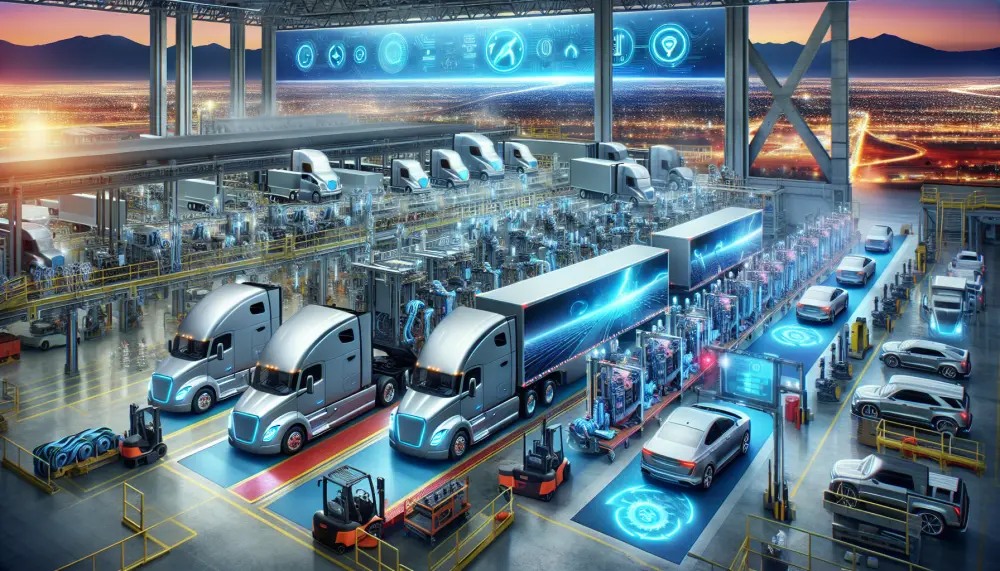Japan Welcomes Cutting-Edge EV Battery Safety Lab: Secure Your Journey with UL Solutions


The Future Rolls In with UL Solutions’ New Laboratory
Have you ever found yourself wondering what exactly is protecting the magical box of sparks under your electric vehicle? Yes, that high-voltage battery that keeps your car whizzing silently on the highway. As much as we appreciate the silence, the safety of those batteries is paramount. Enter UL Solutions—a superhero in a lab coat, recently unveiling their new Battery Enclosure Material Screening (BEMS) laboratory in Ise, Mie, Japan. We’re talking about a lab that will supercharge the safety measures for electric vehicle (EV) batteries. Clap your hands, green warriors and road safety enthusiasts!
Why This Lab is Bigger News than a Tin of Sardines in Tokyo
Protecting EV Occupants - Think Fireproof Fortress
Let's paint a picture: Imagine your EV battery is like the heart of Iron Man's suit, and the enclosure is its metal shield. This setup is not just fancy metal for show; it’s designed to withstand extreme conditions. The materials used in these enclosures are subjected to rigorous testing, which is vital to ensure that, in case of a catastrophic battery fire or thermal runaway event, the occupants are as safe as peas in a pod.
What on Earth is Thermal Runaway?
Before we get too far ahead of ourselves, let’s break down this buzzword: thermal runaway—a condition where the battery's temperature skyrockets uncontrollably, causing a fiery cascade. Not exactly what you'd expect during your peaceful Sunday drive, right? This runaway reaction creates excessive heat, smoke, and potential fire, turning your high-tech vehicle into more of a pyrotechnic show.
BEMS - The Knight in Shining Armor
The Heartbeat of Material Testing
The primary heroics performed at the UL Solutions BEMS laboratory revolve around testing materials for their mettle (pun very much intended). The lab will evaluate battery enclosure materials focusing on thermal and mechanical stress resistance. When the going gets hot, these materials better get fireproof!
Two Core Tests: BETR and TaG
The lab utilizes two critical tests to ensure materials are up to snuff:
-
BETR (Battery Enclosure Thermal Runaway):
- Simulates thermal runaway scenarios.
- Tests material plaques against entire battery assemblies.
- Uses lithium-ion battery cells (18650 type).
- Cuts down on testing costs and development time—a win-win for manufacturers and consumers.
-
TaG (Torch and Grit):
- Conducts small-scale testing.
- Simulates high temperatures and mechanical impact stress.
- Ranks materials for their performance in hostile conditions.
Why the Hype?
These tests are not mere lab bench shenanigans; they translate directly to safer, more reliable EVs on the road. Thanks to these evaluations, manufacturers can innovate lighter, longer-lasting batteries that safeguard your journey, all while keeping safety headlights on.
Riding the Wave of Japanese Innovation
The Cherry Blossom Effect
The strategic location of this new lab in Japan isn't just about geography; it's about technological synergy. Japan has always been at the forefront of automotive innovation. This move augments the country's already strong suit of sushi-level precision in manufacturing and adds another feather in their cap of green, sustainable technology.
UL Solutions’ Expanding Universe
UL Solutions is not planting its flag in uncharted territory. The Ise campus already brims with laboratories specializing in safety, EMC, reliability testing, and even a CHAdeMO EV-Quick Charger Matching Center. It’s an ecosystem thriving on innovation, practically a paradise for an automotive safety scientist.
From the Horse's Mouth – A Few Words from the Insiders
According to Hidehiko Yamajo, regional vice president of Japan at UL Solutions, "Manufacturers in the automotive industry are investing in researching and developing lighter batteries to extend electric vehicle range and stay competitive while keeping occupant safety at the forefront." Translation: They’re racing a green Ferrari to the future, making it safer and cooler one test at a time.
Securing the Ride for Future Generations
It Takes a Village
The success of these initiatives doesn't rest on the lab alone. Collaboration is paramount. Manufacturers, material suppliers, and safety scientists work hand in glove to ensure the advancements in battery safety keep pace with the rapid evolution of electric vehicles.
A Step Toward Greener Pastures
Safer batteries mean fewer risks, which makes for cleaner, greener, and more reliable transportation. It’s not just about saving the guy in the futuristic car; it’s also about safeguarding our planet. And let's be honest, it's tough to combat climate change without a few superheroes in lab coats working behind the scenes.
Conclusion - Driving Home the Point
So next time you’re behind the wheel of your silent, smooth electric vehicle, give a nod of appreciation to the unseen warriors—the safety scientists making sure your battery enclosure can withstand the heat. UL Solutions’ new Battery Enclosure Material Screening Laboratory in Japan may not make headlines every day, but it's these steps forward that ensure we all travel safely into an electrifying, sustainable future.
In summary, with Japanese precision and UL Solutions' relentless commitment, the future of EV battery safety looks as promising as a well-rolled sushi. Here’s to many more miles of safe, green driving!


